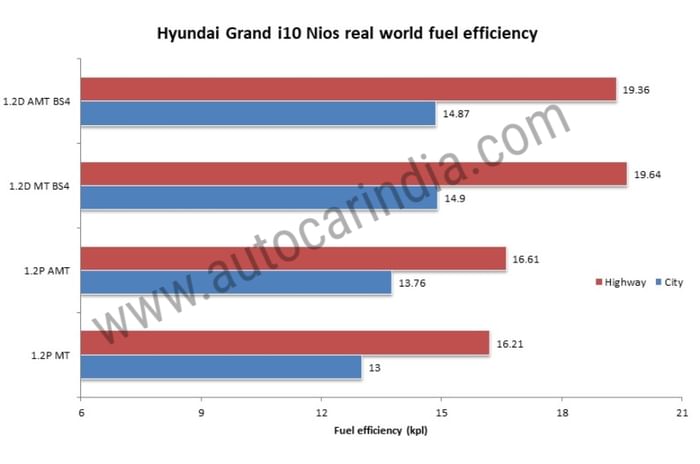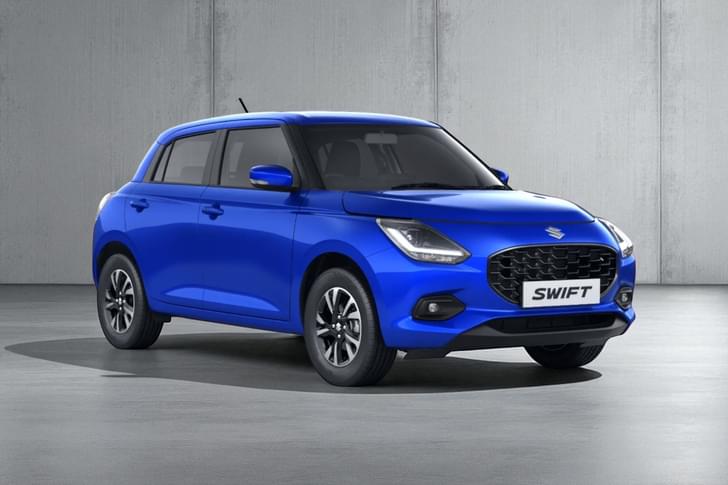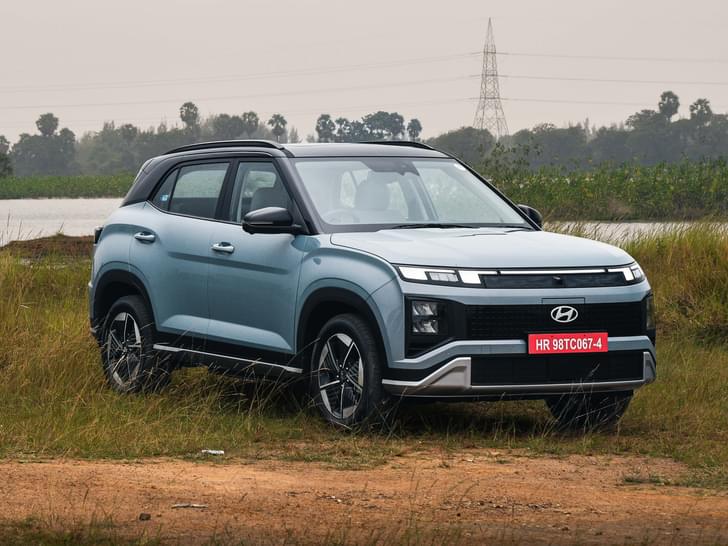The Hyundai Grand i10 Nios is a user-friendly, fundamentally-strong hatchback that’s affordable yet feels premium in the way it has been packaged and equipped. As a city-friendly, family car this Hyundai is as good as it gets and that’s the reason why it consistently features in the top-10 best-selling cars in India. Hyundai offers the Grand i10 Nios with a 1.2-litre petrol, 1.0-litre turbo-petrol, CNG and a 1.2-litre diesel engine, with a choice of manual and automated manual transmissions (AMT). We now take a closer look at the real world fuel efficiency of the BS6 1.2-litre petrol engine.
- Petrol AMT is more efficient than the manual
- 5-speed AMT available with petrol and diesel
- Weight ranges between 950kg and 1,036kg
What is the real-world fuel efficiency of Hyundai Grand i10 Nios?
The Nios excels in the area which matters to its buyers the most that is fuel efficiency. In our tests the BS6 petrol-manual version returned 13kpl and 16.21kpl in the city and on the highway respectively, while the petrol-AMT returned 13.76kpl and 16.61kpl in the same cycle. While we haven’t tested the BS6 diesel of the Nios, the BS4 diesel-manual returned 14.90kpl and 19.64kpl, and the BS4 diesel-AMT managed 14.87kpl and 19.36kpl in our city and highway cycle, respectively.

Analysis of Hyundai Grand i10 Nios’ efficiency
The Nios’ petrol engine offers modest performance, but what users will be happy to know is that the Nios petrol betters the Grand i10 petrol-manual’s city fuel efficiency number by 1.3kpl, in our test. The petrol-AMT takes convenience and efficiency a step further. Not only does it offer the convenience of clutch-free driving, its clever shift points and its urgency to shift to the top-most gear in order to save fuel, helps it attain better efficiency than the manual. For reference, when driving with a light foot, the petrol AMT shifts to fifth gear at speeds as low as 45kph. At 100kph, the manual and AMT are spinning at 2,900rpm in fifth gear. Interestingly, the BS6 diesel’s ARAI numbers have dropped by 1.1kpl, hence, the BS4 diesel’s fuel efficiency may be used as reference and its actual numbers could vary, because the BS6 iteration of this diesel engine gets an LNT (Lean NOx Trap), DPF (Diesel Particulate Filter) and new high-pressure injectors, among other modifications.
Autocar India’s fuel efficiency testing
Before our real world fuel efficiency test we fill the tanks of our test cars till the brim and maintain tyre pressures based on the manufacturer’s recommendation. These cars are driven in fixed city and highway loops and we maintain certain average speeds. To keep a check on any untoward variation, we always have a reference car driving along, one that we’ve already tested in the past; periodic driver swaps further neutralize variations in driver patterns. At the end of each cycle, we calculate efficiency by tanking them up till the brim. Throughout our test there is only one person in each car, running the air-con and other electrical like the audio system, indicators and wipers when required, just like how a regular user would. We take pride in our testing data which isn’t merely consistent, but also gives users an accurate indication of what they can expect in the real world.





































